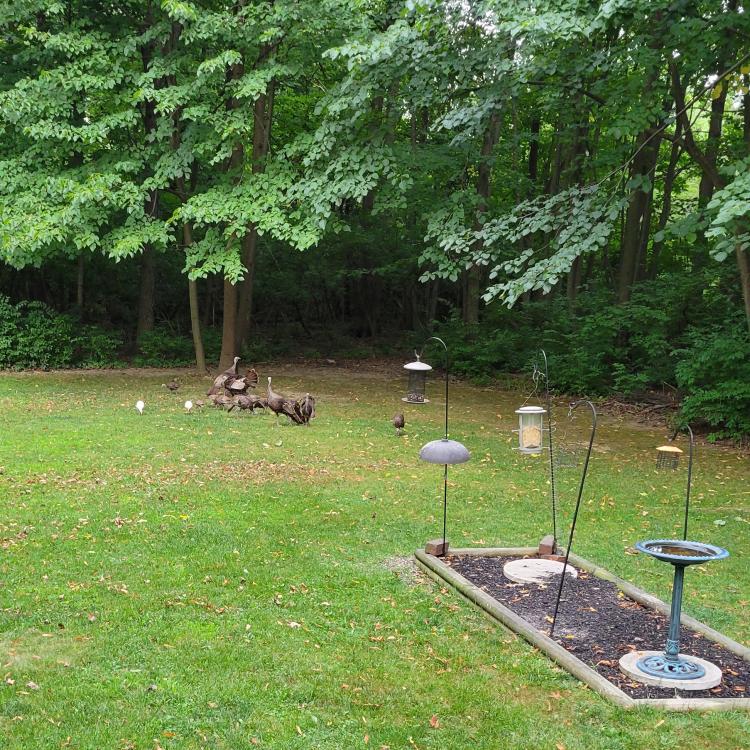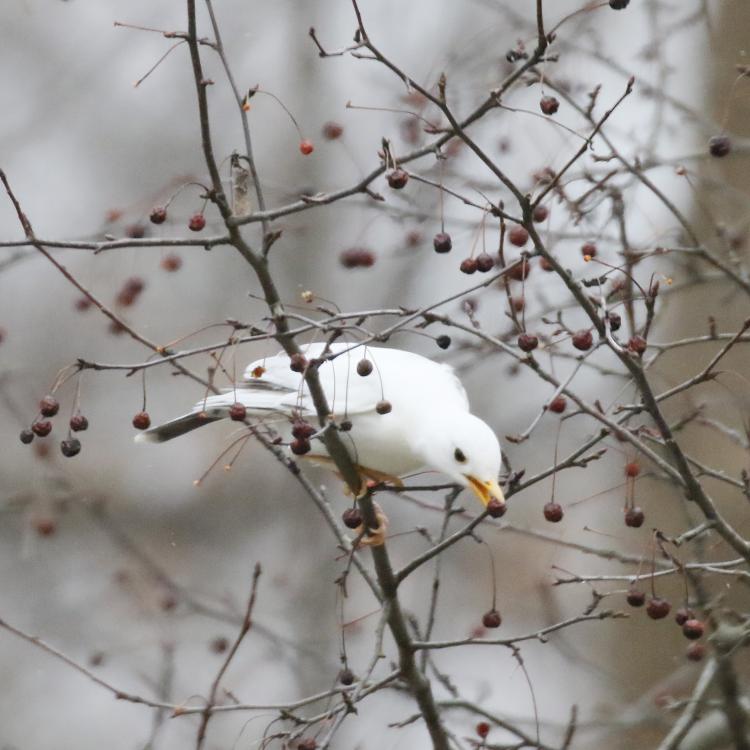Reader Steve Stroh shared this photo of a wild turkey family that includes two young turkeys who are white, an unusual color for the wild birds.
Steve Stroh, Midwest Electric
Q. Hi, Chip: I enjoy reading your articles in Ohio Cooperative Living magazine. I live in the country in a woods, and we have three families of wild turkeys that feed in our backyard a few times a day. There are two albino chicks in the group. Thought you may be interested, as I’m not sure how rare that is.
A. Thanks for contacting me about your wild turkey flocks, Steve; and yes, albinism in wild turkeys is rare. It could be that your flocks have interbred with domestic turkeys at some point, or the albinism could be a genetic mutation that happens from time to time in totally wild populations. Do you have a photo of one or both of the albino chicks? If so, please send it along and I will share it with other Ohio Cooperative Living readers.
Another thought is that your two white wild turkey poults could be leucistic rather than true albinos. Leucism is the partial loss of pigmentation in an animal causing white, pale, or patchy coloration of the skin, hair, feathers, scales, or cuticles, but not the eyes. I had this leucistic robin (pictured) fly into my yard a couple of years ago. It was part of a flock of robins feeding on the fruit of a crabapple tree. Notice that the robin’s eyes are a normal dark color, not the pink or light blue of an albino.
Ronna Harding, The Frontier Power Company
Q. I happened to read your interesting article titled Conservation Corps in the July 2023 issue of Ohio Cooperative Living magazine. In the article you mention stewardship events, and one of those events was the fact that volunteers work to eradicate invasive non-native plants. One of those specific plants has invaded my backyard and I want to get rid of it. The plant I am dealing with is “tree of heaven,” certainly not aptly named. I am writing to see if you know of anyone who has the knowledge and experience to eradicate these plants. I live in Tuscarawas County in the New Philadelphia area. Thanks for any help.
A. Hi, Ronna: To obtain information about eradicating tree of heaven, also known as ailanthus, I suggest you contact the OSU Extension Office in Tuscarawas County, here is the link to their website: https://tuscarawas.osu.edu/.
Rick Ratliff, Consolidated Cooperative
Q. Are there any poisonous watersnakes in Morrow County? Or any poisonous snakes at all in the county?
A. No, Rick, you can rest easy, there are no poisonous watersnakes in Morrow County, but Northern watersnakes are quite common and can be aggressive. Also, there are no poisonous snakes in Morrow County, in general. Ohio has three indigenous poisonous snakes — timber rattlesnake, copperhead, and swamp rattlesnake, also known as the Massasauga — but none live in your county. Two of those three species are state-endangered, so are very rare. Of the trio, the copperhead is the species that’s not state endangered; it lives in eastern and southern Ohio. By the way, I will be writing about the Buckeye State’s three poisonous snakes in a spring 2024 issue of Ohio Cooperative Living in my Woods, Waters & Wildlife outdoors column.










